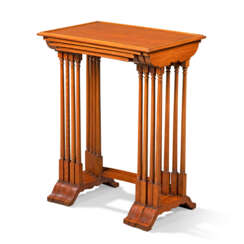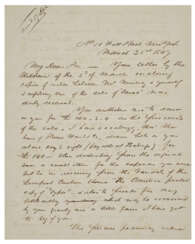mr 73

Thierry Guetta, better known as Mr Brainwash, is a French-born American street artist and filmmaker known for his unique and unconventional approach to art.
Thierry Guetta is recognised for his collaborations with renowned street artist Banksy. His works combine elements of pop art, street art and graffiti, resulting in colourful and visually impressive works. Getty's work often features cultural icons, famous personalities and popular images, creating a distinctive and recognisable style. With his playful and thought-provoking works, Mr Brainwash continues to push the boundaries of contemporary art and challenge traditional notions of artistic expression.


Thierry Guetta, better known as Mr Brainwash, is a French-born American street artist and filmmaker known for his unique and unconventional approach to art.
Thierry Guetta is recognised for his collaborations with renowned street artist Banksy. His works combine elements of pop art, street art and graffiti, resulting in colourful and visually impressive works. Getty's work often features cultural icons, famous personalities and popular images, creating a distinctive and recognisable style. With his playful and thought-provoking works, Mr Brainwash continues to push the boundaries of contemporary art and challenge traditional notions of artistic expression.


Mr. Doodle, real name Sam Cox, is a contemporary British artist who has used his signature monochrome cartoon doodles to decorate his own home, fulfilling a childhood dream.
The doodle decor decorates bedclothes, cooker, kettle, toaster, microwave, kitchen cabinets, bath, door handles, chairs, dining table, windows, doors, chandeliers, fireplace frame, chimney and many others. No surface inside or outside the house was left untouched.


Man Ray, born Emmanuel Radnitzky, was an American visual artist who played a significant role in the Dada and Surrealist movements. His pioneering efforts in photography, alongside his work in painting and sculpture, have cemented his place as a major figure in modern art. Known for his innovative techniques and the ability to convey complex ideas through simple, striking visuals, Man Ray's contribution to the art world is profound.
Throughout his career, Man Ray was celebrated for his avant-garde approach and his ability to transcend traditional boundaries between different artistic mediums. His photography, characterized by experimental techniques such as solarization and rayographs (cameraless photographs), challenged conventional perceptions of photography as merely a means of representation. These artistic innovations made him a central figure in both Parisian and American art circles.
Man Ray's works are housed in some of the world's most prestigious museums and galleries, including the Museum of Modern Art in New York and the Centre Pompidou in Paris. His pieces, such as "Le Violon d'Ingres" and "Noire et Blanche," are iconic images that continue to influence artists today. His ability to blend the abstract with the realistic, and the humorous with the serious, has left a lasting legacy in the world of art.
For collectors and experts in art and antiques, the work of Man Ray offers a glimpse into the revolutionary changes that shaped the visual arts in the 20th century. His unique perspective and pioneering techniques continue to inspire and challenge those interested in the boundaries of creativity and expression.
If you're passionate about the avant-garde, or simply wish to explore the fascinating world of Man Ray further, sign up for our updates. You'll receive alerts on new product sales and auction events related to Man Ray, ensuring you never miss an opportunity to engage with the legacy of this extraordinary artist.


Emanuel Leutze was an American and German painter of the mid-nineteenth century. He is known as a painter who worked in the historical genre and is considered a representative of the Düsseldorf School of painting.
Emanuel Leutze was born in Germany and moved to America at the age of nine. He received his art education in Philadelphia, then, returning to Germany, at the Düsseldorf Academy of Fine Arts. His most famous painting, "Washington Crossing the Delaware," was painted in his native country, with views of the Delaware River taken from Rhenish landscapes. Returning to the United States in 1859, the artist decorated the Washington Capitol with his historical paintings. His work is highly regarded in America for its patriotic orientation.
In Germany, Leutze was one of the founders of the Association of Artists "Malkasten", the Association of German Artists, headed the Union of Mutual Aid of Düsseldorf artists.


John White Alexander was an American portrait, figure, and decorative painter and illustrator.


Herman Melville was an American writer, poet, and sailor.
Melville's hardship-filled youth ended on a whaling ship. He returned from his adventures in the South Seas in October 1844, and wrote "Taipi" the following spring. The book was based on the events surrounding Melville's desertion from the whaling ship Acushnet in 1842 and subsequent adventures in the Marquesas Islands.
Melville wrote several other novels and short stories and many poems, but during his lifetime his works were little appreciated by his contemporaries. Only in the 1920s began to rethink Melville, and he was recognized as a classic of world literature. World fame Melville already in the 20th century brought irrational novel "Moby Dick".


Winslow Homer was an American landscape painter and printmaker, renowned for his mastery of marine subjects and considered a preeminent figure in 19th-century American art. Born in Boston, Massachusetts in 1836, Homer was largely self-taught, starting his career as a commercial illustrator before venturing into oil painting and watercolors.
Homer's art evolved significantly over his lifetime. During the American Civil War, he worked as a correspondent, creating sketches that conveyed both the immediacy and the human cost of the war. This experience deeply influenced his later work, particularly his powerful oil paintings depicting war and its aftermath. After the war, Homer's focus shifted towards scenes of nature and rural America, reflecting a national nostalgia for simpler times. His works from this period, such as "The Cotton Pickers" and "Snap the Whip," showcase his ability to capture everyday life with poignant realism and emotional depth.
Later in his career, Homer became renowned for his watercolors and seascapes, such as "Breezing Up (A Fair Wind)" and "The Gulf Stream," which are celebrated for their dynamic composition and vivid portrayal of human interaction with nature. His late seascapes, which often depicted the rugged coastlines of Maine, are particularly noted for their dramatic intensity and hint at modernist abstraction, capturing the formidable power and timeless beauty of the sea.
Homer's works are held in high regard and continue to be featured in major museums and galleries, providing inspiration and insight into the American experience of the 19th century.
For those interested in the works of Winslow Homer and the impact of his art, you can sign up for updates related to new product sales and auction events featuring his work. This will keep you informed on opportunities to engage more deeply with Homer's enduring legacy.


John La Farge was an American artist whose career spanned illustration, murals, interior design, painting, and popular books on his Asian travels and other art-related topics.
La Farge is best known for his production of stained glass, mainly for churches on the American east coast, beginning with a large commission for Henry Hobson Richardson's Trinity Church in Boston in 1878, and continuing for thirty years. La Farge designed stained glass as an artist, as a specialist in color, and as a technical innovator, holding a patent granted in 1880 for superimposing panes of glass. That patent would be key in his dispute with contemporary and rival Louis Comfort Tiffany.


Max Weber, a Polish-born American painter, was a trailblazer in introducing Cubism to the United States. Born in 1881 in Bialystok Weber moved to New York at the age of ten. His early encounters with European avant-garde movements in Paris profoundly influenced his artistic style. Weber's work is noted for its daring adoption of Cubist techniques, which he melded with his personal expression and later, themes from his Jewish heritage.
Max Weber's notable works include "Chinese Restaurant" (1915), celebrated for capturing the dynamic essence of urban life through Cubist fragmentation. This piece, housed at the Whitney Museum of American Art, exemplifies his skill in conveying atmosphere and energy through abstract forms. Another significant work, "Sabbath" (1919), reflects his cultural background and is part of the Brooklyn Museum's collection. Weber's impact on American art is also marked by his role as an educator and his literary contributions, which include poems and essays on art that further articulated his artistic vision.
Max Weber's paintings are held in high esteem across major museums, including the Museum of Modern Art and the Smithsonian American Art Museum, highlighting his prominence in the art community. His legacy is that of a pioneer who not only introduced new styles to American audiences but also enriched it with his diverse cultural perspective.
For collectors and art and antiques experts, Max Weber's works represent a pivotal fusion of European avant-garde movements with American artistic trends, making his pieces highly significant in the study and collection of early modernist art.
For updates related to new product sales and auction events concerning Max Weber's work, sign up here to stay informed on the latest offerings.


Paul Gauguin, a French artist born in Paris in 1848, is renowned for his significant contributions to Post-Impressionism, Primitivism, and Synthetism. Gauguin's art is distinguished by his experimental use of color and style, which set him apart from the traditional Impressionist movement.
Gauguin's early life was marked by a period in Peru, which influenced his artistic perspective. Initially, he pursued a career in stockbroking but soon turned to art, driven by financial necessity and a growing passion. His artistic journey began under the mentorship of Impressionist artist Camille Pissarro and through exposure to the works of other avant-garde artists.
The hallmark of Gauguin's work is his exploration of non-Western cultures, particularly during his time in Tahiti and the Marquesas Islands. This period saw the creation of some of his most famous works, including "Where Do We Come From? What Are We? Where Are We Going?" His paintings from this era, characterized by vivid colors and Symbolist themes, reflect a fusion of cultural influences and his quest for a "primitive" expression of spiritual and emotional states.
Despite his innovative style, Gauguin struggled with financial difficulties and health issues throughout his life. His work received little recognition during his lifetime, but posthumously, he gained acclaim for influencing modern artists like Pablo Picasso and Henri Matisse.
Today, Gauguin's works are celebrated in galleries and museums worldwide for their unique blend of cultural influences and artistic innovation. His enduring legacy is a testament to his unique vision and the profound impact he had on the art world.
Collectors and experts in art and antiques, stay updated on new product sales and auction events related to Paul Gauguin. Sign up now for exclusive updates and immerse yourself in the world of this visionary artist.










































































